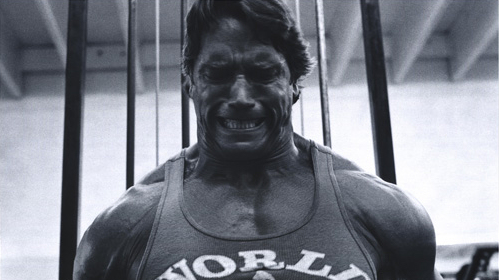We talk about intensity a lot. It holds a sacred place in the CrossFit Charter of “Mechanics, Consistency, Intensity”. When you have mastered the first two steps, it is time to pursue intensity in your training.
When we say intensity, we mean power. Power = Force x Distance / Time. It is the time rate of doing work. A higher power output means a higher intensity WOD. This is measurable fact. Why is this important? Because intensity equals results. To quote Greg Glassman from the 2007 article, Understanding CrossFit, “Intensity is defined exactly as power, and intensity is the independent variable most commonly associated with maximizing favorable adaptation to exercise.” To get fitter, we aim to do more work, faster. That is why we record our Fran times and try to improve them.
This is where scaling comes in to play. It is for the sake of intensity that we have a time frame written beside every WOD on the whiteboard. You may be able to RX Fran, but if it is going to take you 20 minutes, you probably shouldn’t. Every CrossFit workout has a desired stimulus. Some days are designed to be heavy and slow. Some days are designed to be light and fast. If you are sacrificing intensity and excessively taxing your nervous system by lifting weights that are too heavy for you, you will not get the intended results. The same goes for heavy days. If you are rushing through your sets without taking enough rest, you are probably not fulfilling your potential. Every day you come in, consider the purpose of the workout. If you are not sure, ask your coach.
Smart scaling can increase the power output (intensity) of a workout. The RX weights and standards provide a great way to measure the performances of athletes all over the world, as well as a quantifiable goal to work towards. If you can keep within the prescribed time domain of a WOD at RX, then congratulations! What we want to avoid is an RX-at-all-costs attitude. Going RX in a WOD may result in a brutal workout, but not necessarily in the desired way. CrossFit is, as defined by the T-shirt I was given at my Level 1 course, “Constantly Varied, High Intensity, Functional Movement”. If you are taking too long to complete a workout, your maximum power output will be sacrificed. As you spend time pacing behind your bar, the pillar of High Intensity is not being met. And when we sacrifice intensity, we sacrifice results.
Intensity is relative, and it is unique to the individual. It is the third step, after Mechanics and Consistency have been pursued. Intensity has nothing to do with going RX. Heavy, light, easy and hard mean different things to everyone, and vary from day to day. When the clock beeps time, everyone in the room should feel that same metcon burn, and to achieve this, we need to scale. This doesn’t apply only to choosing weights. If there are 50 double unders in a WOD, and you can only do one without tripping over, halve the number so that you get a good workout in, and don’t spend 6 minutes of a 7 minute AMRAP frustrated and whipping yourself. Over time, you will be able to increase the rep count, just as we aim to increase the weight on our bar.
Results do not come from barely surviving a workout. Choose your weights wisely so that you can achieve the desired intensity of a workout, and with consistent training, the times will go down and the weights will go up.













































[…] should be easy, it shouldn’t. But your focus should be less on your score, and more on the intended effect of the workout. Your training is your off-season. It is how you minimize your weaknesses and enhance your […]
[…] simple, reliable, personal indicator of the intensity with which you are training. We all know that intensity=results. However, every workout calls for a different application of intensity. We want to burn through […]
[…] Intensity means doing more work in less time. We know intensity produces results. But intensity must be applied on a foundation of skill. If skill can’t keep up with the intensity, we have a problem. […]